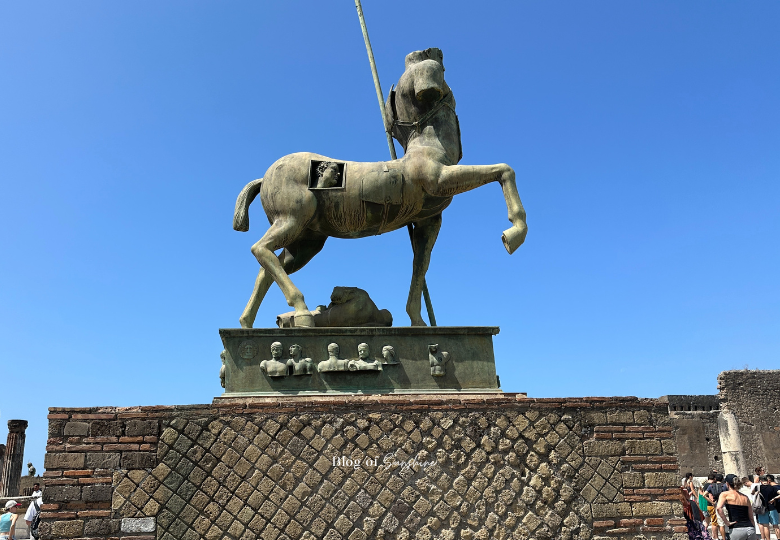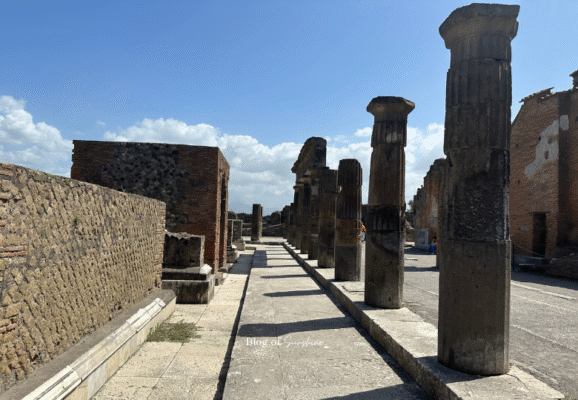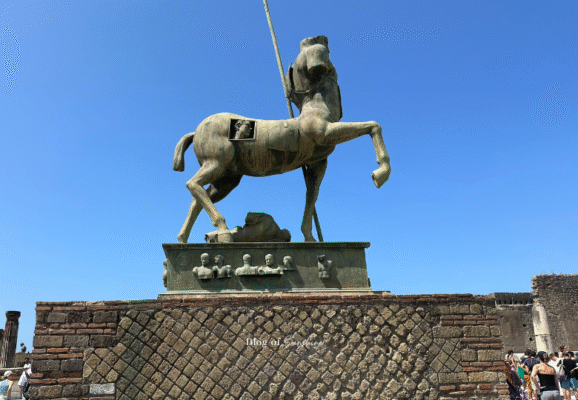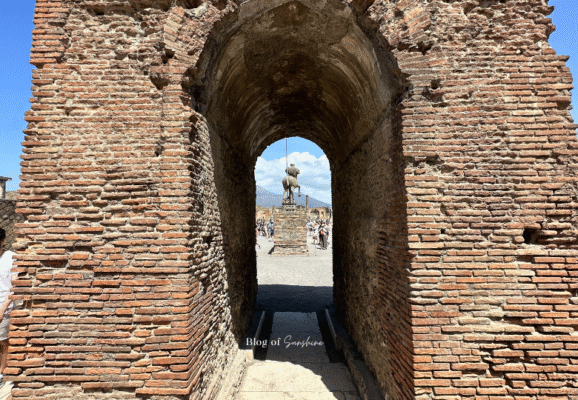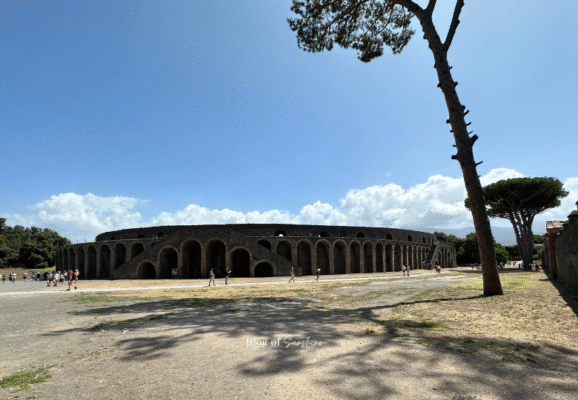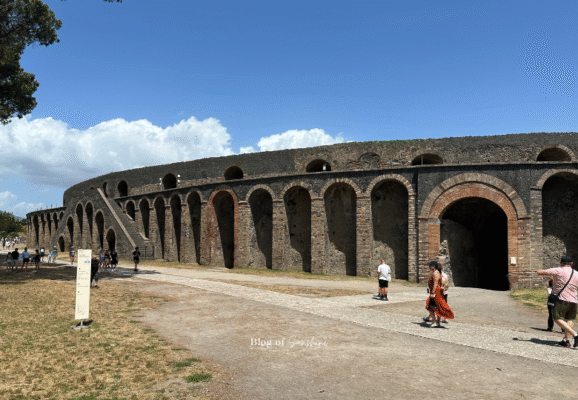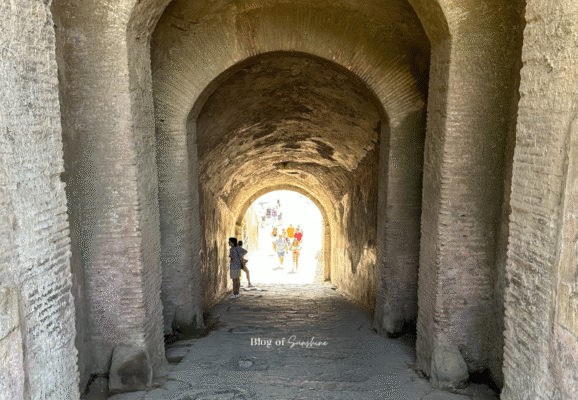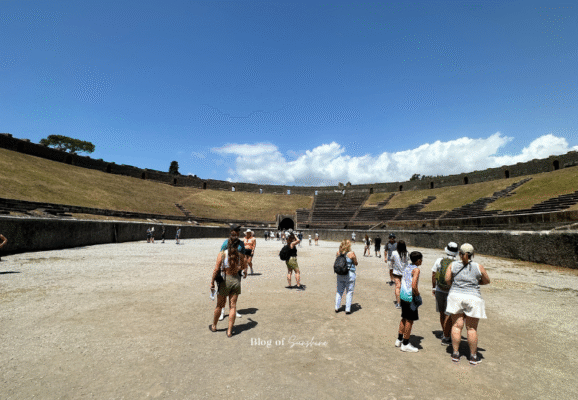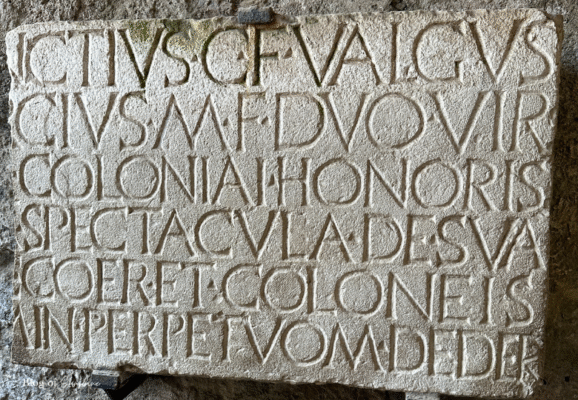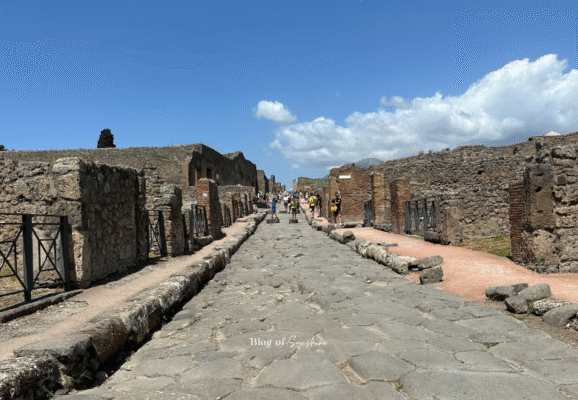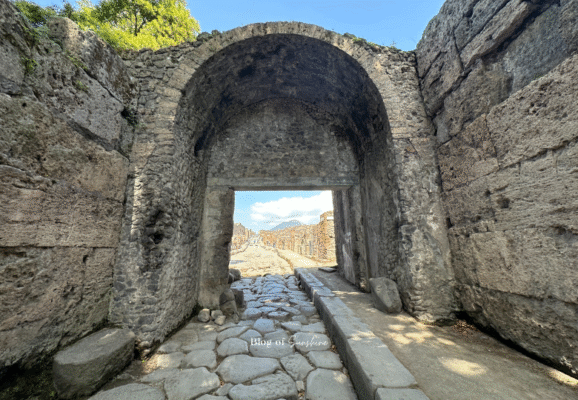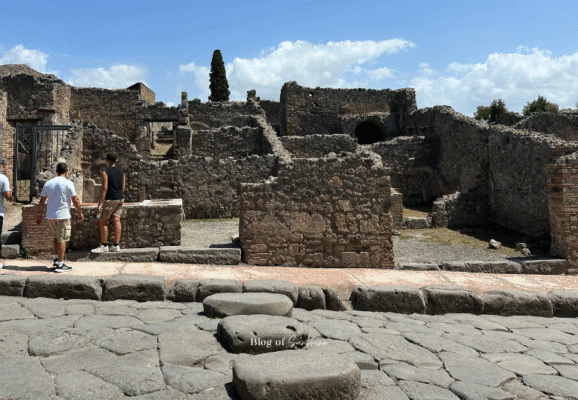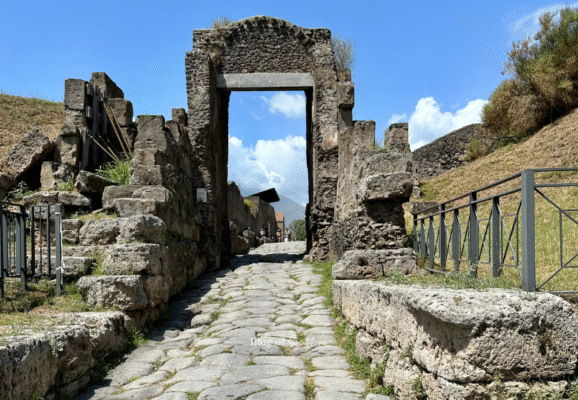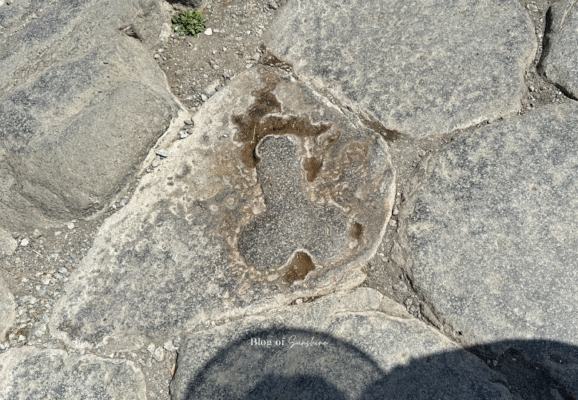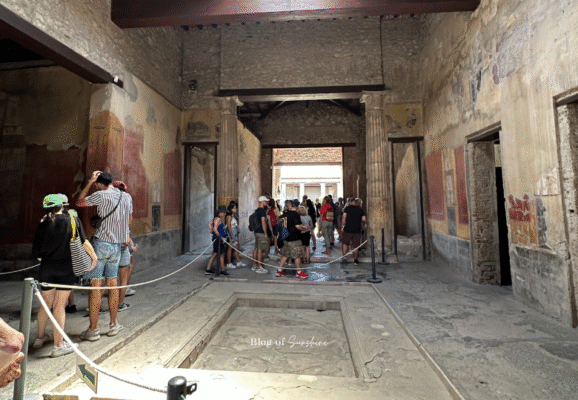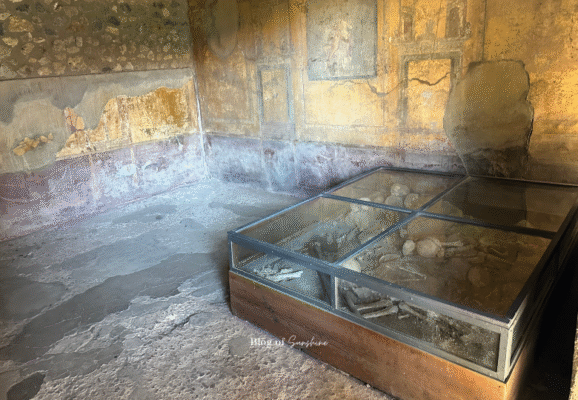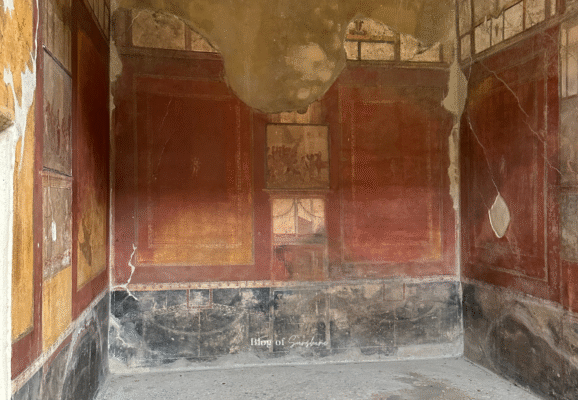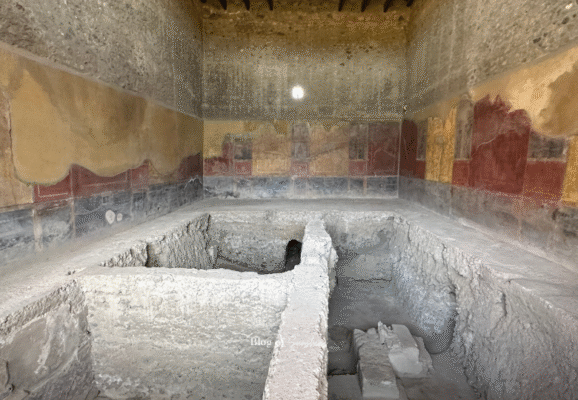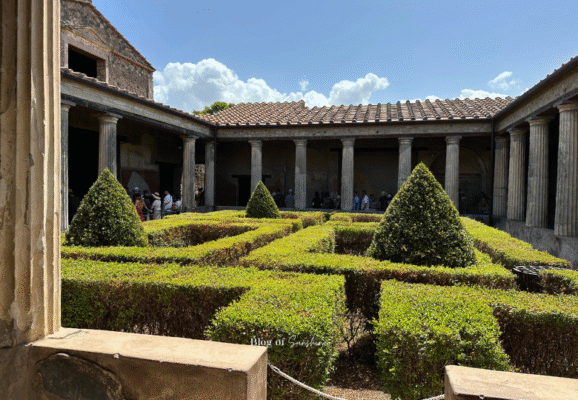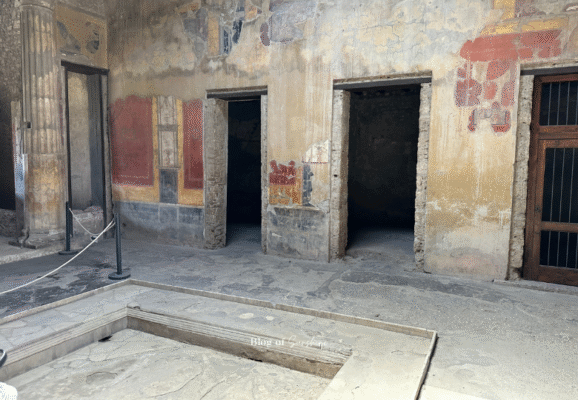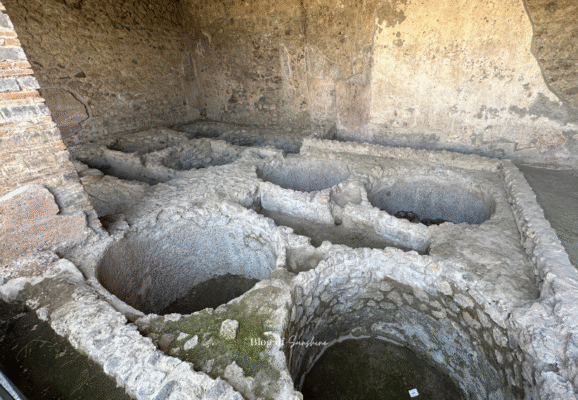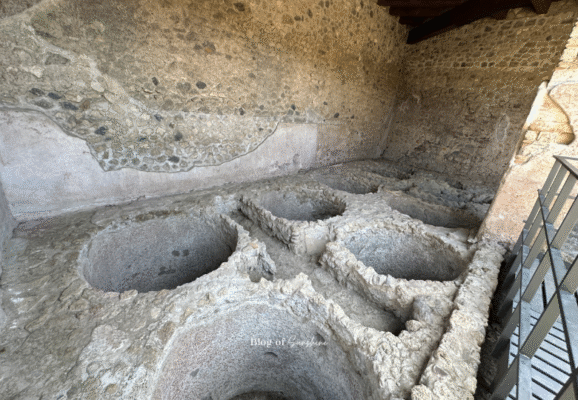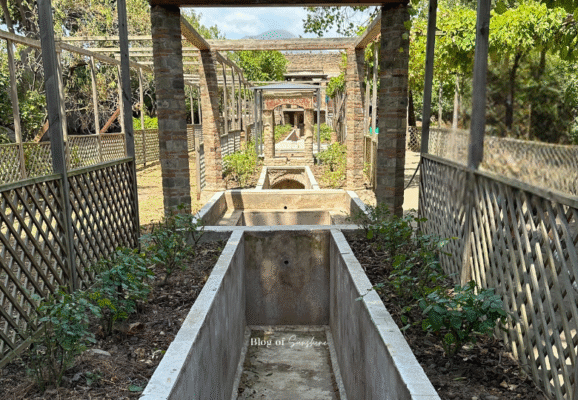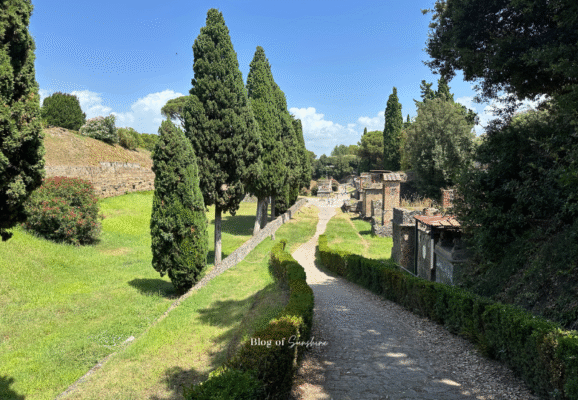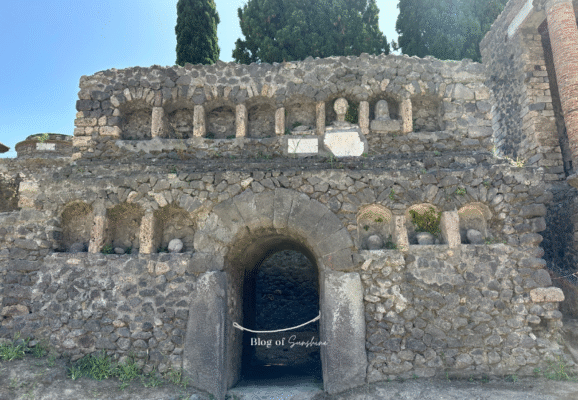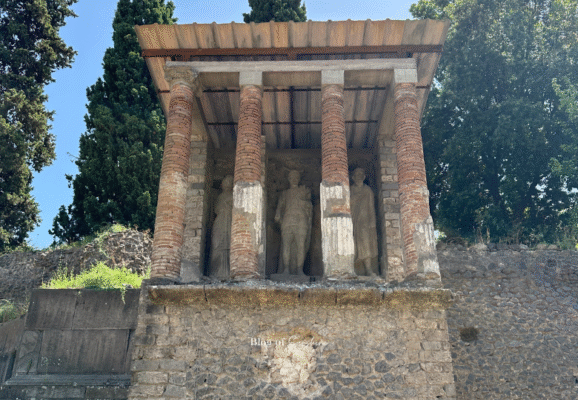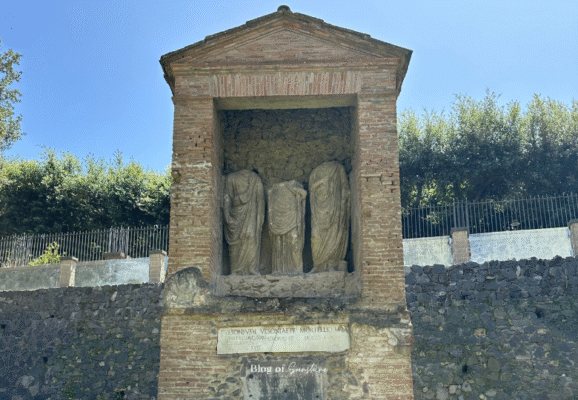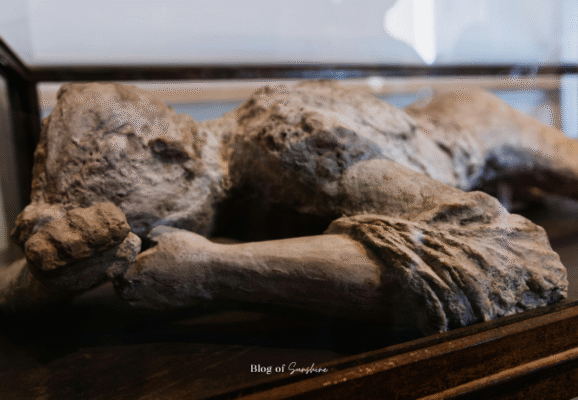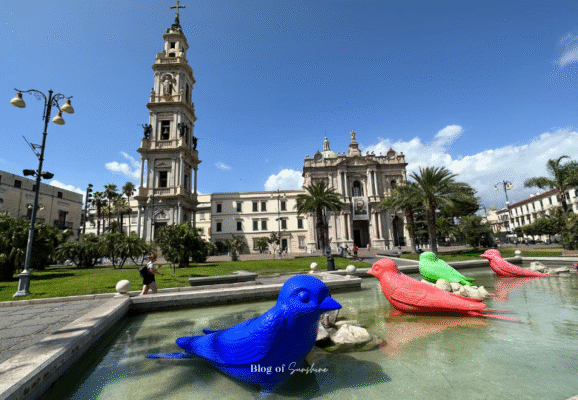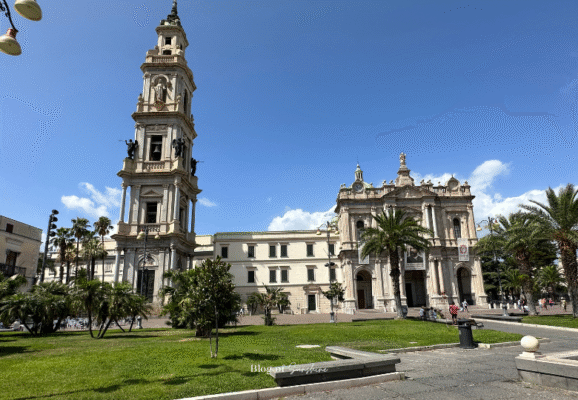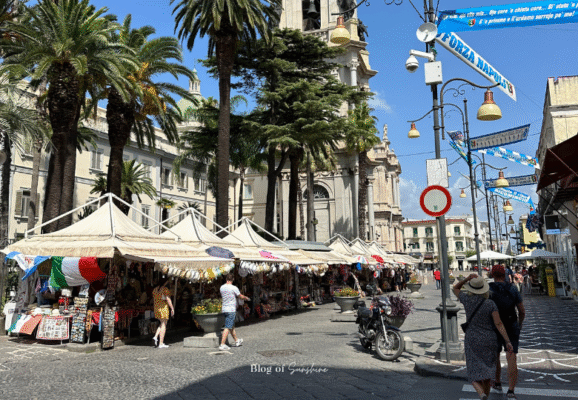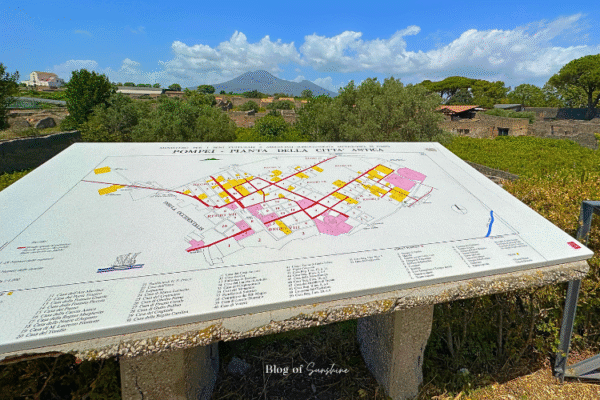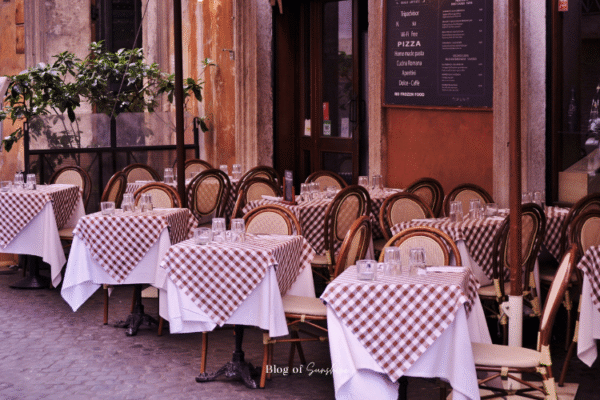Table of Contents
Step back nearly 2,000 years into one of the world’s most fascinating archaeological wonders, Pompeii, the ancient Roman city buried in ash after the catastrophic eruption of Mount Vesuvius in 79 AD. Today, it stands as one of Italy’s most iconic UNESCO World Heritage Sites, offering a rare glimpse into everyday life in ancient Rome. Whether you’re a history buff, a curious traveler, or planning your next Italian getaway, Pompeii is a must-visit destination that promises awe-inspiring ruins, hauntingly preserved streets, and unforgettable stories. In this guide, we’ll uncover the top 10 things to see in Pompeii, from grand villas and bustling forums to mysterious brothels and eerie plaster casts, to help you make the most of your visit in 2025 and beyond.
And if you’re struggling for travel advice – why not read our How to Get from Sorrento to Pompeii guide?
🏛️ The Forum of Pompeii – The Beating Heart of an Ancient Roman City
No visit to Pompeii is complete without stepping into the Forum, the grand public square that once served as the civic, religious, and economic center of the ancient Roman city. Surrounded by impressive temples, government buildings, and the remains of statues and columns, the Forum gives visitors a vivid sense of daily life before Mount Vesuvius’ eruption in 79 AD.
This rectangular plaza was where Pompeians gathered for markets, political debates, and religious ceremonies. Today, the view is equally powerful, with the ruins framed by a clear sightline to Mount Vesuvius looming in the background. Highlights within the Forum include the Temple of Jupiter, the Basilica, and the monumental centaur statue by Igor Mitoraj, which adds a compelling modern contrast to the historic setting.
The Forum is not only one of the most photographed spots in Pompeii, but it’s also one of the best places to connect with the spirit of this ancient Roman city. Whether you’re a first-time visitor or returning to discover more, the Forum is a must-see location that anchors the entire archaeological site.
Keywords included: Forum of Pompeii, Pompeii Forum history, ancient Roman city center, what to see in Pompeii, Pompeii ruins, Mount Vesuvius view, Pompeii sightseeing
🐎 The Centaur Statue by Igor Mitoraj – A Modern Touch in Ancient Pompeii
Amid the centuries-old ruins of Pompeii’s Forum, visitors are often surprised to find a striking modern sculpture, a towering bronze centaur. Created by renowned Polish artist Igor Mitoraj, this contemporary piece blends classical mythology with modern artistry, symbolizing the tension between human reason and primal instinct.
Originally part of a temporary exhibition in 2016, the statue remains a permanent fixture due to its visual impact and cultural resonance. The centaur, with its fragmented yet powerful form, stands as a poignant reminder of Pompeii’s enduring relevance, where the ancient and modern worlds collide in one of Italy’s most visited archaeological sites.
This unexpected artwork has become a popular photo spot and a must-see for art lovers, history buffs, and anyone looking to experience Pompeii through a new lens.
🏟️ The Amphitheatre of Pompeii – The Oldest Surviving Roman Arena
Built in 80 BC, the Amphitheatre of Pompeii is the oldest surviving Roman amphitheatre in the world, even predating the Colosseum in Rome by over a century. This massive stone structure could seat up to 20,000 spectators and served as the city’s venue for gladiator fights, public spectacles, and entertainment.
Located at the edge of the ancient city, the amphitheatre is remarkably well-preserved, offering an immersive look at Roman engineering and social life. You can still walk through the original entrances and climb the stone steps that once echoed with the cheers of Pompeian crowds. The oval shape and tiered seating remain intact, giving visitors a rare opportunity to experience an ancient stadium that has withstood both time and tragedy.
Today, it’s a favorite among history enthusiasts, architecture lovers, and photographers, and has even hosted modern cultural events, including a concert by Pink Floyd in 1971, a performance that has since become legendary.
If you’re looking to connect with the grandeur and drama of ancient Rome, the Pompeii Amphitheatre is a must-see stop on your archaeological journey.
🏘️ The Streets of Pompeii – Walking Through Ancient Roman Life
One of the most fascinating parts of visiting Pompeii is simply walking through its original Roman streets, remarkably preserved under layers of volcanic ash. Paved with large stone slabs, these streets still show the ruts carved by ancient carts, offering a literal track into the past.
As you explore, you’ll notice stepping stones placed across intersections, these were ingeniously designed to let pedestrians cross during heavy rain without stepping in the water, while still allowing carts to pass through the gaps. Some roads are flanked by raised sidewalks, guiding you past shops, homes, bakeries, and fountains, giving a clear layout of how this vibrant city once functioned.
The streets of Pompeii aren’t just a way to get from site to site, they are an experience themselves. They tell stories of daily life, commerce, and community, all frozen in time. Whether you’re following the Via dell’Abbondanza (one of the main roads) or wandering off into quieter alleys, every step is a journey through history.
🔞 The Phallic Carvings of Pompeii – Ancient Roman Road Signs?
As you walk the stone streets of Pompeii, you may come across an unexpected and curious carving: a phallic symbol etched into the pavement. While modern eyes might view it as crude or humorous graffiti, this symbol held very different meanings in ancient Roman culture.
In Pompeii, the phallic image was a symbol of protection, prosperity, and fertility. Far from being taboo, it was commonly used in household decorations, shop signs, and public spaces – including roads. Many archaeologists believe that these carvings may have also functioned as directional markers, potentially pointing travelers toward brothels or places of business. Others interpret them as protective talismans meant to ward off evil spirits and bring good fortune to those passing by.
Whatever its intended use, this ancient carving is a fascinating reminder that the daily life and beliefs of Romans were far more complex – and open-minded – than we often assume. It’s one of the many details that make Pompeii an unforgettable journey into the past.
🏠 The House of the Vettii – Pompeii’s Most Lavish and Provocative Villa
Tucked behind the bustling streets of ancient Pompeii lies one of its most extraordinary homes: the House of the Vettii (Casa dei Vettii). Lavishly decorated and stunningly preserved, this elite residence belonged to two wealthy freedmen, Aulus Vettius Conviva and Aulus Vettius Restitutus, who rose to affluence through commerce. Today, it stands as one of the best examples of Roman interior design, art, and social mobility.
The villa’s layout revolves around a breathtaking peristyle garden, featuring meticulously trimmed hedges, marble statues, and a columned portico. Inside, visitors are greeted with an array of vivid frescoes in the Fourth Style, a luxurious mix of mythological scenes, trompe-l’œil architecture, and bold red and black color schemes. Many rooms still display erotic or satirical artworks, reflecting Roman tastes and a proudly decadent lifestyle.
Highlights of the House of the Vettii include:
-
The famous Priapus fresco at the entrance (symbolizing wealth and fertility)
-
Lavish banquet rooms with intricate wall art
-
The elegant courtyard garden that offers a peaceful retreat amidst the ruins
Recently reopened to the public after extensive restoration, the House of the Vettii offers an unmatched glimpse into the opulence and artistry of Pompeii’s elite. It’s a must-see for anyone interested in Roman art, architecture, and social history.
🧼 The Fullonica of Pompeii – Ancient Rome’s Dye and Laundry House
Tucked between elegant villas and bustling streets, Pompeii’s fullonicae offer a fascinating glimpse into the working-class heart of the ancient city. These were laundries and dye houses, where garments were cleaned, bleached, dyed, and pressed, all without modern machinery. The most famous example is the Fullonica of Stephanus, one of several such establishments found throughout the city.
Inside, you’ll find rows of large stone basins (called pilae), like those in the image above. Workers would stomp fabrics by foot in these tubs, often using a mixture that included water, clay, and human urine, a surprisingly effective source of ammonia. After soaking, garments were rinsed, dried on rooftops, and sometimes re-dyed or finished with stone pressers to restore crispness.
The fullonica was a vital part of Pompeii’s urban economy, servicing both everyday citizens and elite households. It’s a powerful reminder that Roman cities weren’t just about grandeur, they were built on skilled labor, trade, and craftsmanship.
🍇 Vineyard of the Gladiators – Farming and Archaeology Side-by-Side
Right beside the Amphitheatre of Pompeii, visitors can walk through a fascinating reconstruction: the Vineyard of the Gladiators, an archaeological experiment and agricultural restoration project. The area recreates how vineyards were planted and irrigated in ancient Pompeii, based on evidence found during excavations, including vine root casts and carbonized seeds.
The stone channels and planting beds you see were part of the original layout, designed to manage water flow and cultivate vines efficiently. The wooden trellises have been rebuilt to reflect Roman training methods for grapevines. This vineyard wasn’t just for decoration, Pompeii was a major wine-producing region, and plots like this were part of everyday life.
Nearby, archaeologists even discovered the skeletal remains of several individuals, including what may have been a Roman guard and merchant, trapped during the eruption, adding a somber human layer to this serene setting.
🪦 Via delle Tombe – Pompeii’s Avenue of the Dead
Just outside the Porta Ercolano (Herculaneum Gate) lies one of the most atmospheric and contemplative walks in ancient Pompeii – the Via delle Tombe, or “Street of the Tombs.” Flanked by cypress trees, hedges, and carefully spaced stone monuments, this elegant path served as the city’s necropolis, where the deceased were honored in tombs and memorials lining the road.
In ancient Roman tradition, burials were not allowed within the city walls, so the roads leading into town became avenues of remembrance, where both the wealthy and freedmen could showcase their legacy. Along the Via delle Tombe, you’ll find mausoleums, columbaria, and inscribed tombs, some of which still display busts or carvings that immortalize the identities of those buried here.
The peaceful layout and preserved tomb façades offer a powerful contrast to the bustling life seen inside Pompeii’s city limits. Walking this route today is both a historical and emotional journey; a quiet moment to reflect on how the Romans celebrated memory, honor, and the passage of time.
🧍♂️ The Plaster Casts of Pompeii – Faces Frozen in Tragedy
One of the most haunting and unforgettable parts of visiting Pompeii is encountering the plaster casts of the eruption’s victims; men, women, and children forever preserved in the final moments of their lives. These casts are not statues or sculptures. They are the actual shapes of people who perished in the catastrophic eruption of Mount Vesuvius in 79 AD.
During the 19th century, archaeologists discovered that the ash from the eruption had hardened around the bodies, leaving hollow spaces where the flesh and clothing had decayed. By carefully pouring plaster into these voids, they were able to recreate incredibly detailed molds of the victims, down to the folds in their garments, the expressions on their faces, and the positions they collapsed in.
You can see many of these casts at the Garden of the Fugitives, where entire families were found huddled together, trying to escape the pyroclastic surge. Others are displayed in the Antiquarium Museum, the Forum granaries, and select homes and courtyards throughout the archaeological site.
Seeing the casts in person is an emotional experience that transforms Pompeii from a collection of ruins into a deeply human story of loss and survival. It’s a moment that stays with you long after you leave.
🎁 Bonus: Don’t Miss Modern Pompeii’s Charming Town Center
While most visitors come to see the ancient ruins, few take time to explore the modern town of Pompeii – and that’s a missed opportunity. Just steps away from the archaeological site lies a vibrant, welcoming town with its own charm, culture, and culinary treasures.
The central square (Piazza Bartolo Longo) is a great place to unwind after a day among the ruins. It’s anchored by the magnificent Sanctuary of the Madonna of the Rosary, a stunning 19th-century basilica that draws pilgrims from all over Italy. Lined with cafés, gelaterias, and local shops, the square is the perfect spot to enjoy an espresso or a cold limoncello while watching local life unfold.
You’ll also find beautifully kept gardens, relaxed pedestrian streets, and some of the best pizza and seafood restaurants in the Campania region – all within walking distance of the ancient city.
So before you head back to Naples or the Amalfi Coast, take a moment to enjoy the modern-day heart of Pompeii. It’s a peaceful, authentic contrast to the echoes of history you’ll find inside the ruins – and a perfect way to round out your visit.
☀️ Be Prepared for the Heat – Pompeii’s Weather Can Be Intense
If you’re planning a visit to Pompeii, one thing you absolutely must prepare for is the weather, especially the heat. The site is located in southern Italy’s Campania region, which enjoys a classic Mediterranean climate: hot, dry summers and mild, rainy winters.
During the peak travel season (June through September), temperatures regularly soar above 30°C (86°F) and can easily reach 38–40°C (100–104°F) during July and August. Combine that with very little shade inside the archaeological park, and it can quickly become overwhelming if you’re not prepared.
The ruins of Pompeii are expansive, open-air, and mostly exposed to full sun. Stone pathways reflect heat, and there’s limited access to cool, indoor spaces. While you’ll find a few shaded rest areas and drinking fountains throughout the site, sunscreen, hats, sunglasses, and plenty of water are essential.
If you want to beat the heat:
-
Arrive early in the morning when temperatures are cooler.
-
Wear light, breathable clothing and comfortable walking shoes.
-
Bring a reusable water bottle (there are fountains throughout the park).
-
Avoid the hottest hours of the day (typically 12–4 p.m.) or plan a break at the café or museum area.
Even in spring and autumn, temperatures can feel warmer than expected, especially under direct sun. And while winter is much milder, it can be rainy, so waterproof shoes and a jacket are wise.
For more quick answers about visiting Pompeii, see our FAQ section below.
❓ FAQ of Frequently Asked Questions About The Top 10 Things to See in Pompeii
What is the most famous site in Pompeii?
The Forum of Pompeii is the city’s most iconic highlight. It was the beating heart of public life, framed by temples, civic buildings, and markets that reveal how an ancient Roman city worked day to day.
Is the Centaur Statue in Pompeii ancient?
No. The Centaur Statue by Igor Mitoraj is a modern artwork placed among the ruins. Its bronze figure creates a striking contrast with the archaeological setting and is a favorite photo spot.
How old is the Amphitheatre of Pompeii?
Dating to around 80 BC, the Amphitheatre of Pompeii is the oldest surviving Roman arena, predating Rome’s Colosseum. It once hosted gladiator games and mass public events.
Can you walk the ancient streets of Pompeii?
Yes. Visitors can stroll original stone-paved roads with visible cart ruts and raised stepping stones—an immersive way to experience daily life in ancient Pompeii.
Why are there phallic carvings in Pompeii?
Phallic symbols often served as protective charms against bad luck and, in some cases, as directional markers guiding people to specific establishments. They carried both practical and symbolic meaning.
What makes the House of the Vettii special?
The House of the Vettii is a lavish merchant villa renowned for vivid frescoes, intricate mosaics, and bold themes that showcase the sophistication and decadence of Pompeian art and lifestyle.
What was the Fullonica of Pompeii used for?
The Fullonica was an ancient laundry and dye works where textiles were cleaned, bleached, and colored using surprisingly advanced Roman techniques.
What is the Vineyard of the Gladiators?
It’s a site where archaeology meets agriculture: ancient remains were unearthed, and today the land supports grape cultivation, linking Pompeii’s past with modern winemaking.
What is Via delle Tombe?
Via delle Tombe—“Avenue of the Dead”—is lined with monumental tombs outside the city walls, offering insight into Roman burial traditions and commemorating prominent citizens.
What are the plaster casts of Pompeii?
The famous plaster casts were made by filling ash voids left by victims of the AD 79 eruption of Mount Vesuvius. They preserve haunting details of people’s final moments.
Is there anything to see in modern Pompei?
Yes. The modern town of Pompei has a charming center with cafés, shops, and the Sanctuary of the Madonna of the Rosary—a worthwhile stop alongside the archaeological park.
How hot does Pompeii get in summer?
Summer temperatures often exceed 30°C (86°F). Wear light clothing, a hat, sunscreen, and bring plenty of water—shade is limited and the site is largely exposed.
🏁 Final Thoughts – The Top 10 Things to See in Pompeii: A Journey Through Time and the Top Ten Things to See in Pompeii
From ancient streets and haunting plaster casts to lavish villas and vibrant modern piazzas, Pompeii offers an unforgettable mix of history, humanity, and heritage. Whether you’re wandering the ruins of the Forum, admiring Roman frescoes at the House of the Vettii, or grabbing a coffee in the shadow of the Basilica, every corner tells a story frozen in time. Plan ahead for the heat, wear comfy shoes, and leave room in your itinerary to explore the modern town of Pompeii, too, it’s a destination that truly rewards those who go beyond the surface. And remember to check out Pompeii town and try some new dishes – check out our Top 20 Must-Try Italian Dishes You’ve Never Heard Of guide and the Official Pompeii website.
🇮🇹 Dive Into More Italian Journeys & Language Insights
Craving your next slice of Italy’s charm? Explore our specially curated posts to perfect your Italian lingo before ordering gelato in Florence, uncover secret wine trails in Tuscany, and wander the pastel streets of Procida. Packed with regional tips, cultural deep-dives, and essential phrases, these guides will fuel your wanderlust and help you experience la dolce vita like a true insider. Scroll on and keep the Italian adventure
Italy Travel Guides Europe Travel
Sorrento to Pompeii Train Guide (2025 Timetable + Travel Tips)
Plan your stress-free day trip from Sorrento to Pompeii. This 2025 guide includes train timetables, ticket info, station tips, and the best options for tourists.
Explore Italy and it's CultureJun
Italy Travel Guides Europe Travel
Top 10 Things to See in Pompeii – Italy’s Lost City Frozen in Time
Discover the Top 10 Things to See in Pompeii: ancient villas, Forum, plaster casts, baths & hidden streets. Essential tips for exploring this must-see archaeological site.
Explore Italy and it's CultureJun
Italy Travel Guides Europe Travel
How to Tip in Italian Restaurants (Without Awkwardness)
Wondering how to tip in Italian restaurants? This guide explains what’s included, how much to tip, and how to handle it like a local - no awkward moments.
Explore Italy and it's CultureMay
Italy Travel Guides Europe Travel
Top 20 Must-Try Italian Dishes You’ve Never Heard Of
Discover 20 must-try Italian dishes beyond pizza and pasta. Explore authentic local favorites and hidden culinary gems loved by Italians.
Explore Italy and it's CultureMay
Italian
Top 15 Italian Words to Order Food at a Restaurant Like a Local
Learn essential Italian words to order food confidently at restaurants and dine like a local on your next trip to Italy.
Explore Italy and it's CultureMay

